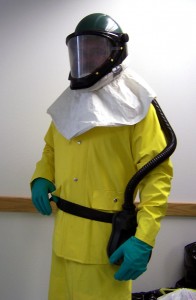Tank Cleaning – Risks and Safety Requirements
| Risks are cases may happen, cause harm to humans, damage to properties and environment. Ricks can be defined when physical properties and characteristics of the chemicals are taken into consideration. In tank cleaning, there may be the following risks: | ||||||
| 1. Fire | ||||||
| The three elements a fire needs to ignite are heat, fuel, and an oxidizing agent (usually oxygen). A fire naturally occurs when the elements are present and combined in the right mixture. In theory, a fire can’t start without one of the three elements. When the tank is cleaned, it contains air, which means we have the oxidizing agent. The tank itself contain fuel, which may become the latter element in the three one if the fuel has low flash point, or if chemicals for cleaning are combustible, they can become the fuel element. Therefore, the only way to prevent a fire and explosion is to prevent the heat element. One heat element can appear is Electrostatic Discharge (ED) especially when spraying, it can generate electric charge. | ||||||
2. Unwanted reactions Saponify: forming a layer of hard soap on tanks, need erasing by acid or even by hydrogen gas Caking: forming hard debris which insoluble, need cleaning with solvent Reaction with water: strong reaction of isocyanate after pretreatment with water | ||||||
 | 3. Corrosion Corrosive substances can damage body tissues (skin, eye, oral mucous membranes and respiratory). Metal, material of tanks can also corrode with speed. | |||||
| 4. Chemical overexposure Sanitation workers must wear proper protective equipment such as aprons, chemical-resistant suits, coveralls, footwear, gloves, headgear, protective eye-wear and respirators. Don’t wear rings, watches, jewelry because it can cause sparking. | ||||||
| 5. Asphyxia Don’t enter tanks lacking oxygen. Ventilation must be carried out carefully. | ||||||
Related
